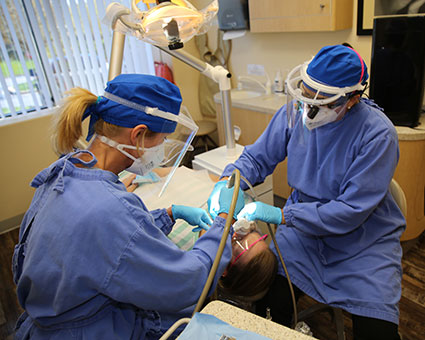Dental Bonding
Composite bonding is a modest restorative option for chipped or severely-stained teeth. The tooth-colored resin blends in with your tooth to cover over the surface flaw and make your smile appear whole again.
When is Bonding Recommended?
 Dental bonding is ideal for situations where only one or two teeth require aesthetic attention. Rather than veneers that cover multiple teeth, bonding addresses isolated cosmetic concerns such as
Dental bonding is ideal for situations where only one or two teeth require aesthetic attention. Rather than veneers that cover multiple teeth, bonding addresses isolated cosmetic concerns such as
- Small chips
- Minimal gaps between teeth
- Uneven enamel
- Atypical tooth shape
- Severe stain
Bonding also works well for children who have a chipped tooth due to an accident or injury.
A bonding procedure is fairly straightforward and non-invasive. Numbing medication may not even be necessary. We’ll typically gently prep the surface of your enamel at that location, then select the appropriate shade of composite to blend in with your tooth. Next, our cosmetic dentist forms it to your enamel in the desired shape and a bright light cures it in place.
Unlike other types of cosmetic restorations, dental bonding is an in-office procedure that does not require any off-site lab design. This characteristic allows us to treat your tooth in just one appointment for immediate results.
If your tooth is severely chipped or sensitive, we can add nitrous oxide (laughing gas) or local anesthetic to minimize any irritation during your appointment.
Although bonding can last for several years, more aggressive fractures tend to respond better to lab-made restorations, such as crowns or veneers. Due to the manufacturing process of porcelain and ceramic materials, crowns can provide additional reinforcement for heavier biting and chewing pressure, whereas bonding could potentially chip off the tooth.
Broken Tooth? Call Now
Find out if dental bonding is right for you. Contact Crafton Dental today to request your first exam.
CONTACT US

